[press release]
Iconic British Owls
-
- 10 stamps feature five species of Owls that breed in the UK
- Stamp images show the: Barn Owl; Little Owl; Tawny Owl; Short-eared Owl and Long-eared Owl
- Five stamps feature adults and a further five stamps depict them as juveniles
- These much loved iconic British birds have been the source of fascination over the ages
- There are more than 200 species of owls worldwide and all are deadly hunters
- The stamps are available to pre-order from today at www.royalmail.com/owls and from 7,000 Post Offices nationwide from 11 May
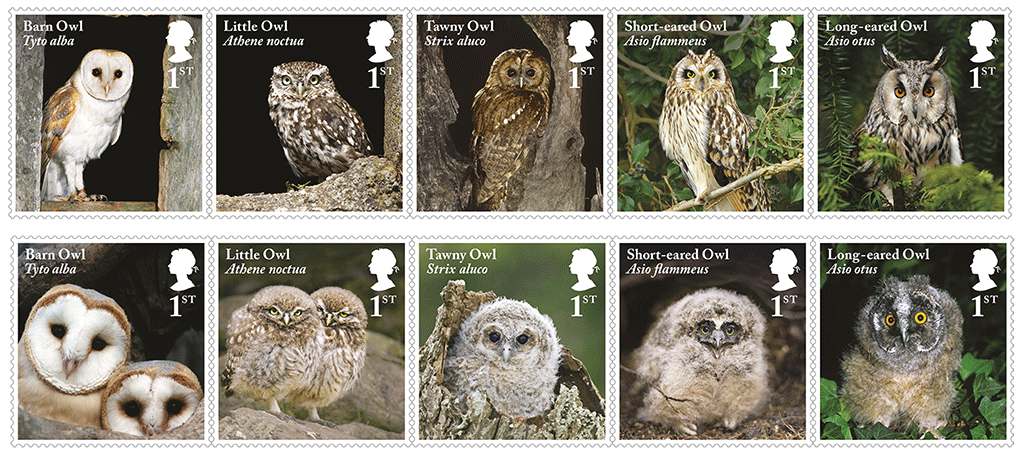
Royal Mail will issue 10 stamps that pay tribute to the much loved, iconic, British owl.
The stamp set, issued on 11 May, shows adult and juvenile images of the: Barn Owl; Little Owl; Tawny Owl; Short-eared Owl and Long-eared Owl.
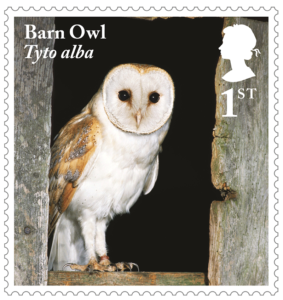 From the mostly nocturnal Barn Owl, to the Short-eared Owl that hunts in the daylight, the stamps depict five species of Owls that breed in the UK.
From the mostly nocturnal Barn Owl, to the Short-eared Owl that hunts in the daylight, the stamps depict five species of Owls that breed in the UK.
There are more than 200 species of owls worldwide and all are deadly hunters – from the tiniest pygmy owl to the most imposing eagle owl – thanks to an array of remarkable physical and behavioural adaptations.
A few owl species are active by day, but most hunt between dusk and dawn, and so need eyesight that excels in low-light conditions. The typical owl eye is adapted to make the very most of all available light being tubular in shape rather than round.
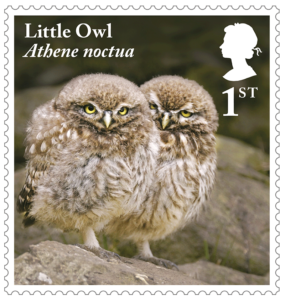 An exemplary sense of hearing is also essential for a bird that hunts in near-total darkness, and whose prey is often concealed under vegetation (or sometimes even snow). All owls have acute hearing, but it is most developed in strictly nocturnal woodland hunters, like the Long-eared Owl.
An exemplary sense of hearing is also essential for a bird that hunts in near-total darkness, and whose prey is often concealed under vegetation (or sometimes even snow). All owls have acute hearing, but it is most developed in strictly nocturnal woodland hunters, like the Long-eared Owl.
Owl communication is primarily through sound, and the various calls they make have distinct meanings. Most familiar are the territorial calls – often a complex series of notes that are analogous to the songs of smaller birds. These serve to announce ownership of a territory to rivals and, in males, also function to attract a mate.
Owls, perhaps more than any other birds, have been regarded with such fascination over the ages. Their haunting calls are often the only clue to their presence and when meeting one face to face, it is possible to see almost human-like expressiveness in that direct, intense gaze.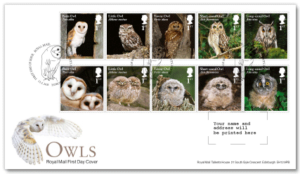
The stamps are available to pre-order from today at www.royalmail.com/owls and from 7,000 Post Offices nationwide from 11 May.
Royal Mail spokesperson Philip Parker says: “Owls are among our most iconic bird species, with their soundless flight and eerie calls, and our new stamps celebrate their beauty.”
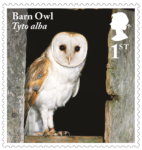 Barn Owl: Also known as the ‘white owl’ and the ‘screech owl’, the Barn Owl is perhaps the UK’s most familiar owl species – most often encountered as a ghostly shape caught in car headlights, or heard rather than seen with its unearthly screaming call. The Barn Owl hunts over all kinds of open country, and tends to nest on ledges inside farm buildings. It is unmistakeable with its white and gold plumage, heart-shaped face, long legs and small dark eyes. While it is mostly
Barn Owl: Also known as the ‘white owl’ and the ‘screech owl’, the Barn Owl is perhaps the UK’s most familiar owl species – most often encountered as a ghostly shape caught in car headlights, or heard rather than seen with its unearthly screaming call. The Barn Owl hunts over all kinds of open country, and tends to nest on ledges inside farm buildings. It is unmistakeable with its white and gold plumage, heart-shaped face, long legs and small dark eyes. While it is mostly 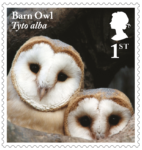 nocturnal, it can also be seen out hunting on summer evenings. It hunts in flight, flying into the breeze for uplift and often hovering before making its strike – its prey mainly located by sound. Barn Owls became very rare following widespread use of the insecticide DDT in the 20th century, but their numbers are now recovering.
nocturnal, it can also be seen out hunting on summer evenings. It hunts in flight, flying into the breeze for uplift and often hovering before making its strike – its prey mainly located by sound. Barn Owls became very rare following widespread use of the insecticide DDT in the 20th century, but their numbers are now recovering.
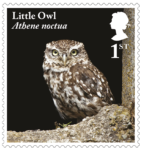 Little Owl: This small, long-legged owl with its bright yellow eyes, white-spotted brown plumage and fiercely frowning expression is common in continental Europe, but not native to the UK. It was deliberately introduced here by ornithologists in the 19th century and has spread widely across southern Britain. Little Owls inhabit woodland and parkland with open grassy areas nearby, and are often seen by day, perched in pairs close to their nest site (usually a hole or crack in a mature
Little Owl: This small, long-legged owl with its bright yellow eyes, white-spotted brown plumage and fiercely frowning expression is common in continental Europe, but not native to the UK. It was deliberately introduced here by ornithologists in the 19th century and has spread widely across southern Britain. Little Owls inhabit woodland and parkland with open grassy areas nearby, and are often seen by day, perched in pairs close to their nest site (usually a hole or crack in a mature 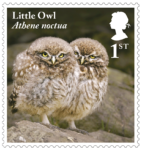 tree), or flying from tree to tree with a distinctive bounding flight action. They hunt mainly insects, dropping on them from a perch or chasing them on the ground. The Little Owl is the national bird of Greece, and has long been recognised as the emblem of Athene, the Greek goddess of wisdom.
tree), or flying from tree to tree with a distinctive bounding flight action. They hunt mainly insects, dropping on them from a perch or chasing them on the ground. The Little Owl is the national bird of Greece, and has long been recognised as the emblem of Athene, the Greek goddess of wisdom.
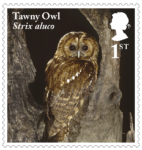 Tawny Owl: The lovely quavering hoot of the Tawny Owl is a familiar night-time sound in woodland, parks and even gardens, but although this is the UK’s most common owl, it is rarely seen, being strictly nocturnal. Tawny Owl pairs stay in their territories year-round and over time build up a great familiarity with the terrain, with favourite hunting watchpoints, roosting sites and a nest site that will be used every year. The owlets leave the nest while still downy and flightless, and climb
Tawny Owl: The lovely quavering hoot of the Tawny Owl is a familiar night-time sound in woodland, parks and even gardens, but although this is the UK’s most common owl, it is rarely seen, being strictly nocturnal. Tawny Owl pairs stay in their territories year-round and over time build up a great familiarity with the terrain, with favourite hunting watchpoints, roosting sites and a nest site that will be used every year. The owlets leave the nest while still downy and flightless, and climb 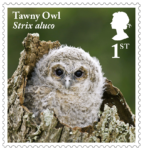 to safe spots among the branches where they wait for food from their parents. The largest of the UK’s owl species, the Tawny Owl is a powerful predator and other owls number among its prey. It is found throughout Great Britain, but is absent from Ireland.
to safe spots among the branches where they wait for food from their parents. The largest of the UK’s owl species, the Tawny Owl is a powerful predator and other owls number among its prey. It is found throughout Great Britain, but is absent from Ireland.
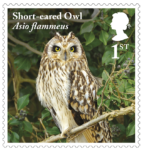 Short-eared Owl: A true nomad, the Short-eared Owl is one of the most widely distributed birds in the world, occurring on all continents except Antarctica. Individuals may travel great distances, stopping to breed where feeding conditions are good. In Britain the species breeds mainly on upland moor in the north and west, but becomes more widespread in winter (and more numerous, as birds arrive from mainland Europe, sometimes in large numbers). A diurnal owl of open moorland
Short-eared Owl: A true nomad, the Short-eared Owl is one of the most widely distributed birds in the world, occurring on all continents except Antarctica. Individuals may travel great distances, stopping to breed where feeding conditions are good. In Britain the species breeds mainly on upland moor in the north and west, but becomes more widespread in winter (and more numerous, as birds arrive from mainland Europe, sometimes in large numbers). A diurnal owl of open moorland 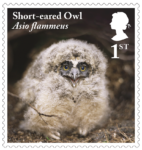 and rough grassland, it hunts on the wing, patrolling back and forth close to the ground, and dropping feet-first upon voles and other prey. In some winters, half a dozen or more may be seen ‘working’ the same field, with coastal areas particularly likely to attract large numbers. The Short-eared Owl is a long-winged owl with grey-brown and sandy, heavily streaked plumage, paler than the similar Long-eared Owl, and with yellow, staring eyes and tiny ear tufts.
and rough grassland, it hunts on the wing, patrolling back and forth close to the ground, and dropping feet-first upon voles and other prey. In some winters, half a dozen or more may be seen ‘working’ the same field, with coastal areas particularly likely to attract large numbers. The Short-eared Owl is a long-winged owl with grey-brown and sandy, heavily streaked plumage, paler than the similar Long-eared Owl, and with yellow, staring eyes and tiny ear tufts.
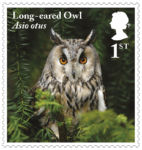 Long-eared Owl: This beautiful, slim, orange-eyed owl is named after its large, cat-like ear tufts, which help to break up its outline as it roosts by day. In the UK it breeds mainly in upland pine forests, but in Ireland (where it does not face competition from Tawny Owls) it is more common and lives in a wider range of habitats. Though the Long-eared Owl nests in woodland, often in the old nest of another bird, it prefers to
Long-eared Owl: This beautiful, slim, orange-eyed owl is named after its large, cat-like ear tufts, which help to break up its outline as it roosts by day. In the UK it breeds mainly in upland pine forests, but in Ireland (where it does not face competition from Tawny Owls) it is more common and lives in a wider range of habitats. Though the Long-eared Owl nests in woodland, often in the old nest of another bird, it prefers to 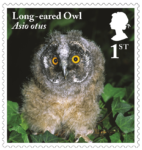 hunt on adjacent open countryside. Its prey mainly comprises small rodents, which it catches either by pouncing from a perch or by searching in flight. The waiting chicks beg with a distinctive ‘squeaky-gate’ call. Long-eared Owls disperse widely in winter, with residents joined by visitors from the Continent, and form winter roosts (which may hold ten or more birds) in thick scrubland.
hunt on adjacent open countryside. Its prey mainly comprises small rodents, which it catches either by pouncing from a perch or by searching in flight. The waiting chicks beg with a distinctive ‘squeaky-gate’ call. Long-eared Owls disperse widely in winter, with residents joined by visitors from the Continent, and form winter roosts (which may hold ten or more birds) in thick scrubland.
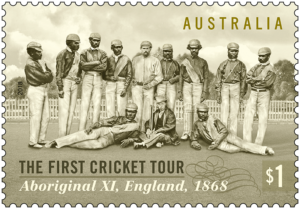 Australia Post is releasing a stamp issue to commemorate 150th anniversary of the sporting achievements of the 1868 Aboriginal XI – the first cricket team from Australia to tour internationally.
Australia Post is releasing a stamp issue to commemorate 150th anniversary of the sporting achievements of the 1868 Aboriginal XI – the first cricket team from Australia to tour internationally.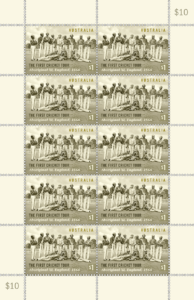 Australia Post Philatelic Manager, Michael Zsolt said: “This was an extraordinary achievement by these players, all of whom, aside from the captain, had only been playing the game of cricket for a few years”.
Australia Post Philatelic Manager, Michael Zsolt said: “This was an extraordinary achievement by these players, all of whom, aside from the captain, had only been playing the game of cricket for a few years”.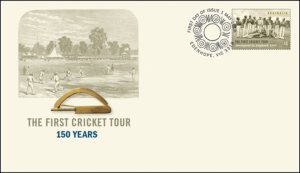
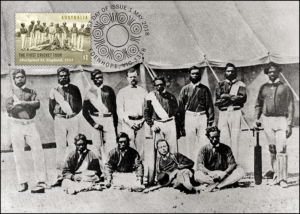 Most players returned to the restrictions of station life following the tour, with few continuing to play cricket. In 2002, the 1868 Aboriginal XI was posthumously recognised in the Sport Australia Hall of Fame as the first cricket team from Australia to tour England. In 2004, each player was posthumously assigned an official Cricket Australia number, to honour their ground-breaking achievements.
Most players returned to the restrictions of station life following the tour, with few continuing to play cricket. In 2002, the 1868 Aboriginal XI was posthumously recognised in the Sport Australia Hall of Fame as the first cricket team from Australia to tour England. In 2004, each player was posthumously assigned an official Cricket Australia number, to honour their ground-breaking achievements.

 From the mostly nocturnal Barn Owl, to the Short-eared Owl that hunts in the daylight, the stamps depict five species of Owls that breed in the UK.
From the mostly nocturnal Barn Owl, to the Short-eared Owl that hunts in the daylight, the stamps depict five species of Owls that breed in the UK. An exemplary sense of hearing is also essential for a bird that hunts in near-total darkness, and whose prey is often concealed under vegetation (or sometimes even snow). All owls have acute hearing, but it is most developed in strictly nocturnal woodland hunters, like the Long-eared Owl.
An exemplary sense of hearing is also essential for a bird that hunts in near-total darkness, and whose prey is often concealed under vegetation (or sometimes even snow). All owls have acute hearing, but it is most developed in strictly nocturnal woodland hunters, like the Long-eared Owl.
 Barn Owl: Also known as the ‘white owl’ and the ‘screech owl’, the Barn Owl is perhaps the UK’s most familiar owl species – most often encountered as a ghostly shape caught in car headlights, or heard rather than seen with its unearthly screaming call. The Barn Owl hunts over all kinds of open country, and tends to nest on ledges inside farm buildings. It is unmistakeable with its white and gold plumage, heart-shaped face, long legs and small dark eyes. While it is mostly
Barn Owl: Also known as the ‘white owl’ and the ‘screech owl’, the Barn Owl is perhaps the UK’s most familiar owl species – most often encountered as a ghostly shape caught in car headlights, or heard rather than seen with its unearthly screaming call. The Barn Owl hunts over all kinds of open country, and tends to nest on ledges inside farm buildings. It is unmistakeable with its white and gold plumage, heart-shaped face, long legs and small dark eyes. While it is mostly  nocturnal, it can also be seen out hunting on summer evenings. It hunts in flight, flying into the breeze for uplift and often hovering before making its strike – its prey mainly located by sound. Barn Owls became very rare following widespread use of the insecticide DDT in the 20th century, but their numbers are now recovering.
nocturnal, it can also be seen out hunting on summer evenings. It hunts in flight, flying into the breeze for uplift and often hovering before making its strike – its prey mainly located by sound. Barn Owls became very rare following widespread use of the insecticide DDT in the 20th century, but their numbers are now recovering. Little Owl: This small, long-legged owl with its bright yellow eyes, white-spotted brown plumage and fiercely frowning expression is common in continental Europe, but not native to the UK. It was deliberately introduced here by ornithologists in the 19th century and has spread widely across southern Britain. Little Owls inhabit woodland and parkland with open grassy areas nearby, and are often seen by day, perched in pairs close to their nest site (usually a hole or crack in a mature
Little Owl: This small, long-legged owl with its bright yellow eyes, white-spotted brown plumage and fiercely frowning expression is common in continental Europe, but not native to the UK. It was deliberately introduced here by ornithologists in the 19th century and has spread widely across southern Britain. Little Owls inhabit woodland and parkland with open grassy areas nearby, and are often seen by day, perched in pairs close to their nest site (usually a hole or crack in a mature  tree), or flying from tree to tree with a distinctive bounding flight action. They hunt mainly insects, dropping on them from a perch or chasing them on the ground. The Little Owl is the national bird of Greece, and has long been recognised as the emblem of Athene, the Greek goddess of wisdom.
tree), or flying from tree to tree with a distinctive bounding flight action. They hunt mainly insects, dropping on them from a perch or chasing them on the ground. The Little Owl is the national bird of Greece, and has long been recognised as the emblem of Athene, the Greek goddess of wisdom. Tawny Owl: The lovely quavering hoot of the Tawny Owl is a familiar night-time sound in woodland, parks and even gardens, but although this is the UK’s most common owl, it is rarely seen, being strictly nocturnal. Tawny Owl pairs stay in their territories year-round and over time build up a great familiarity with the terrain, with favourite hunting watchpoints, roosting sites and a nest site that will be used every year. The owlets leave the nest while still downy and flightless, and climb
Tawny Owl: The lovely quavering hoot of the Tawny Owl is a familiar night-time sound in woodland, parks and even gardens, but although this is the UK’s most common owl, it is rarely seen, being strictly nocturnal. Tawny Owl pairs stay in their territories year-round and over time build up a great familiarity with the terrain, with favourite hunting watchpoints, roosting sites and a nest site that will be used every year. The owlets leave the nest while still downy and flightless, and climb  to safe spots among the branches where they wait for food from their parents. The largest of the UK’s owl species, the Tawny Owl is a powerful predator and other owls number among its prey. It is found throughout Great Britain, but is absent from Ireland.
to safe spots among the branches where they wait for food from their parents. The largest of the UK’s owl species, the Tawny Owl is a powerful predator and other owls number among its prey. It is found throughout Great Britain, but is absent from Ireland. Short-eared Owl: A true nomad, the Short-eared Owl is one of the most widely distributed birds in the world, occurring on all continents except Antarctica. Individuals may travel great distances, stopping to breed where feeding conditions are good. In Britain the species breeds mainly on upland moor in the north and west, but becomes more widespread in winter (and more numerous, as birds arrive from mainland Europe, sometimes in large numbers). A diurnal owl of open moorland
Short-eared Owl: A true nomad, the Short-eared Owl is one of the most widely distributed birds in the world, occurring on all continents except Antarctica. Individuals may travel great distances, stopping to breed where feeding conditions are good. In Britain the species breeds mainly on upland moor in the north and west, but becomes more widespread in winter (and more numerous, as birds arrive from mainland Europe, sometimes in large numbers). A diurnal owl of open moorland  and rough grassland, it hunts on the wing, patrolling back and forth close to the ground, and dropping feet-first upon voles and other prey. In some winters, half a dozen or more may be seen ‘working’ the same field, with coastal areas particularly likely to attract large numbers. The Short-eared Owl is a long-winged owl with grey-brown and sandy, heavily streaked plumage, paler than the similar Long-eared Owl, and with yellow, staring eyes and tiny ear tufts.
and rough grassland, it hunts on the wing, patrolling back and forth close to the ground, and dropping feet-first upon voles and other prey. In some winters, half a dozen or more may be seen ‘working’ the same field, with coastal areas particularly likely to attract large numbers. The Short-eared Owl is a long-winged owl with grey-brown and sandy, heavily streaked plumage, paler than the similar Long-eared Owl, and with yellow, staring eyes and tiny ear tufts. Long-eared Owl: This beautiful, slim, orange-eyed owl is named after its large, cat-like ear tufts, which help to break up its outline as it roosts by day. In the UK it breeds mainly in upland pine forests, but in Ireland (where it does not face competition from Tawny Owls) it is more common and lives in a wider range of habitats. Though the Long-eared Owl nests in woodland, often in the old nest of another bird, it prefers to
Long-eared Owl: This beautiful, slim, orange-eyed owl is named after its large, cat-like ear tufts, which help to break up its outline as it roosts by day. In the UK it breeds mainly in upland pine forests, but in Ireland (where it does not face competition from Tawny Owls) it is more common and lives in a wider range of habitats. Though the Long-eared Owl nests in woodland, often in the old nest of another bird, it prefers to  hunt on adjacent open countryside. Its prey mainly comprises small rodents, which it catches either by pouncing from a perch or by searching in flight. The waiting chicks beg with a distinctive ‘squeaky-gate’ call. Long-eared Owls disperse widely in winter, with residents joined by visitors from the Continent, and form winter roosts (which may hold ten or more birds) in thick scrubland.
hunt on adjacent open countryside. Its prey mainly comprises small rodents, which it catches either by pouncing from a perch or by searching in flight. The waiting chicks beg with a distinctive ‘squeaky-gate’ call. Long-eared Owls disperse widely in winter, with residents joined by visitors from the Continent, and form winter roosts (which may hold ten or more birds) in thick scrubland.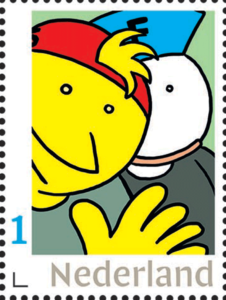 The Hague, 23 April 2018 – PostNL today introduces two new frameworks for the Personal Stamp. Fokke & Sukke decorate the first two completed sheets of Personal Postage Stamps with the new framework in honour of the 25th anniversary of the most famous duck and canary of our country.
The Hague, 23 April 2018 – PostNL today introduces two new frameworks for the Personal Stamp. Fokke & Sukke decorate the first two completed sheets of Personal Postage Stamps with the new framework in honour of the 25th anniversary of the most famous duck and canary of our country.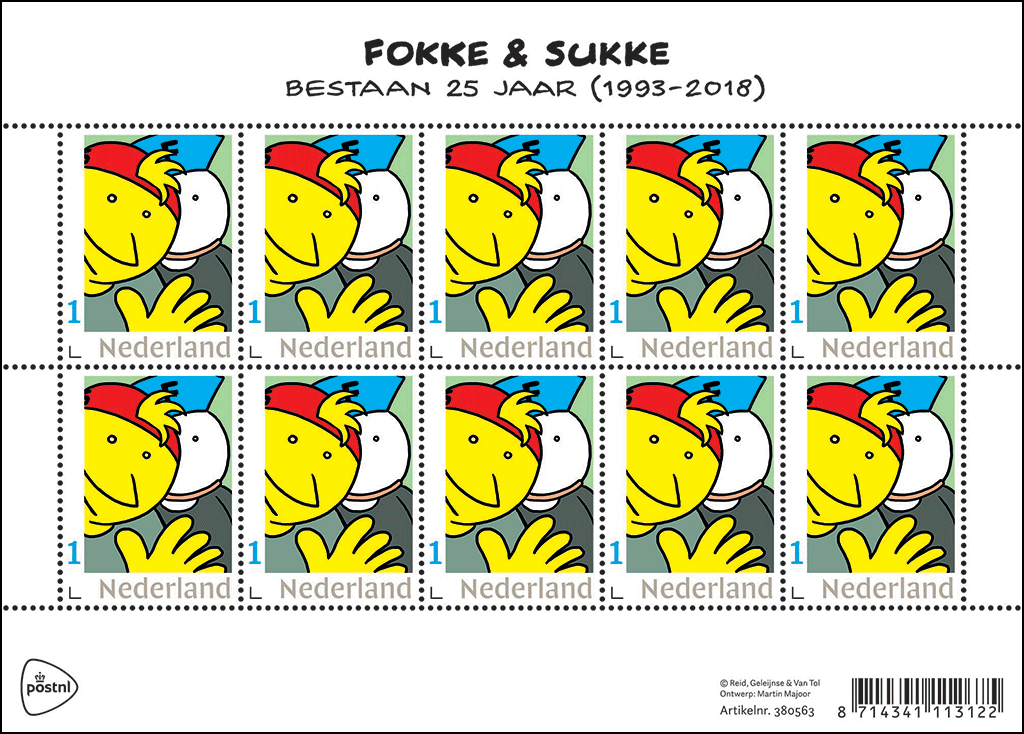
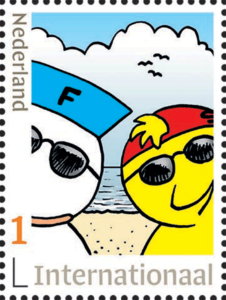 Major also designed a new sans serif letter for the Personal Stamps. “But with the thick-thin variations that you normally associate with serif letters” says Major. “That also fits in with my philosophy to achieve the maximum possible effect with as few elements as possible. As the famous letter designer, Eric Gill, once said about stamps: the more you use them, the simpler they must be.”
Major also designed a new sans serif letter for the Personal Stamps. “But with the thick-thin variations that you normally associate with serif letters” says Major. “That also fits in with my philosophy to achieve the maximum possible effect with as few elements as possible. As the famous letter designer, Eric Gill, once said about stamps: the more you use them, the simpler they must be.”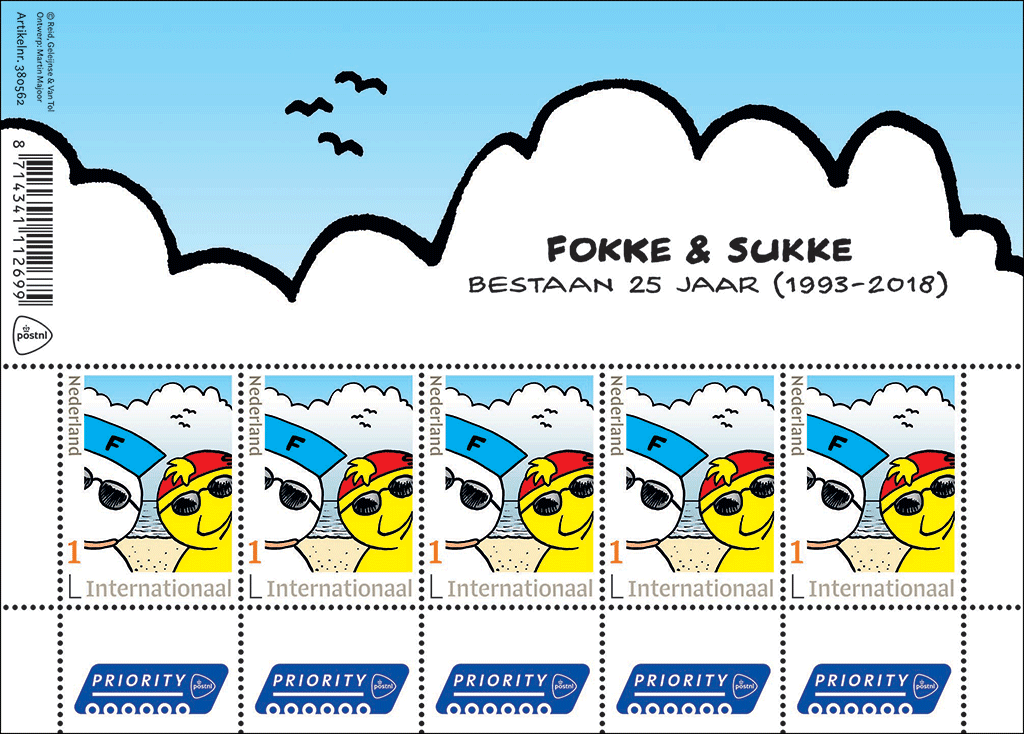


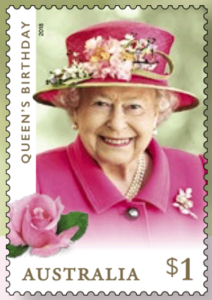
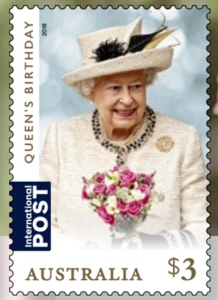 The domestic stamp also features a close-up photograph of the ‘Queen Elizabeth’ (also known as ‘Queen of England’)
– a tall grandiflora rose introduced in 1954. The Queen Elizabeth rose was named to recognise the Queen’s ascension to the British throne in 1952 and subsequent coronation in 1953.
The domestic stamp also features a close-up photograph of the ‘Queen Elizabeth’ (also known as ‘Queen of England’)
– a tall grandiflora rose introduced in 1954. The Queen Elizabeth rose was named to recognise the Queen’s ascension to the British throne in 1952 and subsequent coronation in 1953.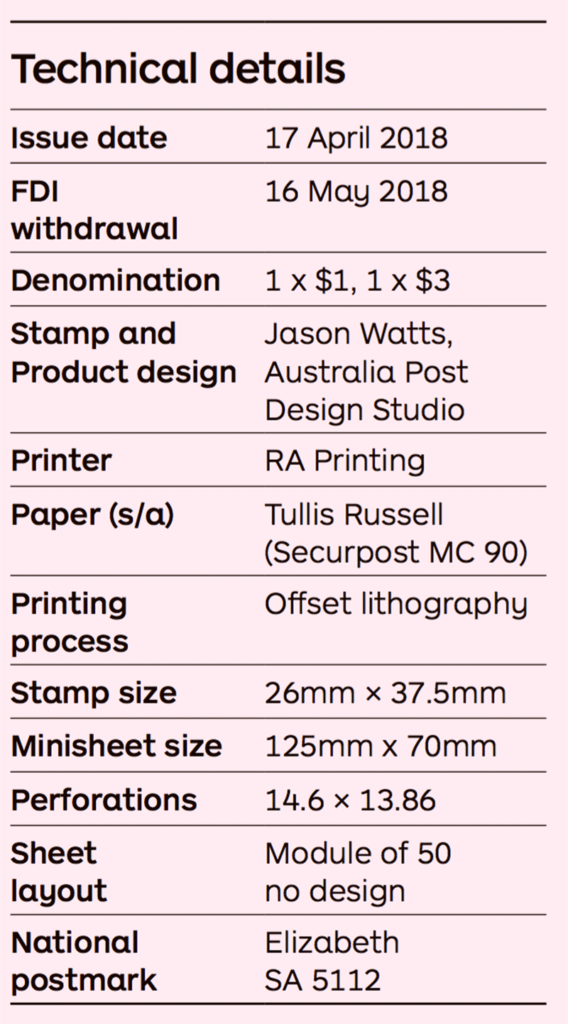
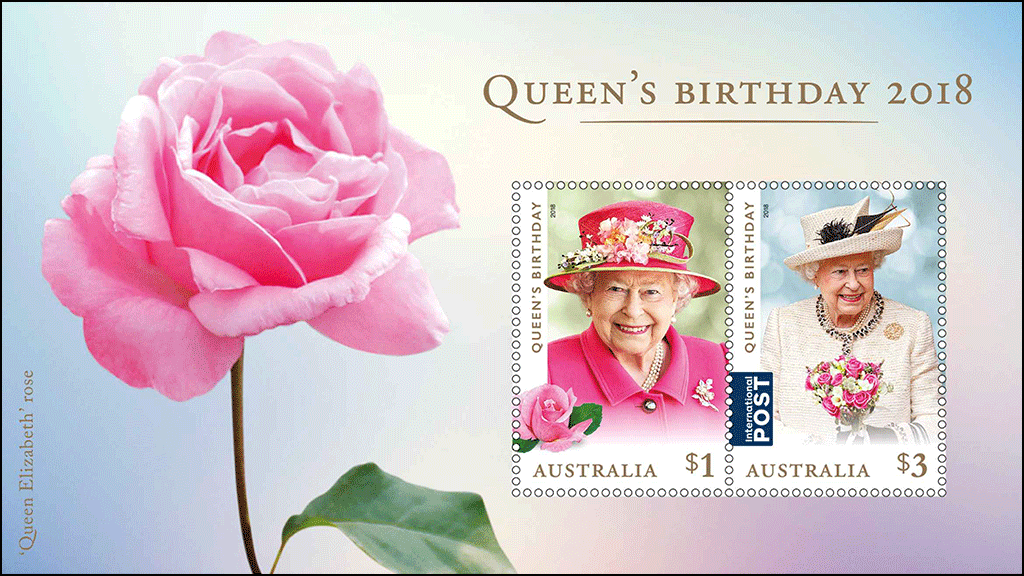 The Queen’s Birthday 2018 stamp issue is available from 17 April 2018 at participating Post Offices, via mail order on 1800 331 794 and online at auspost.com.au/stamps, while stocks last. Please visit
The Queen’s Birthday 2018 stamp issue is available from 17 April 2018 at participating Post Offices, via mail order on 1800 331 794 and online at auspost.com.au/stamps, while stocks last. Please visit 
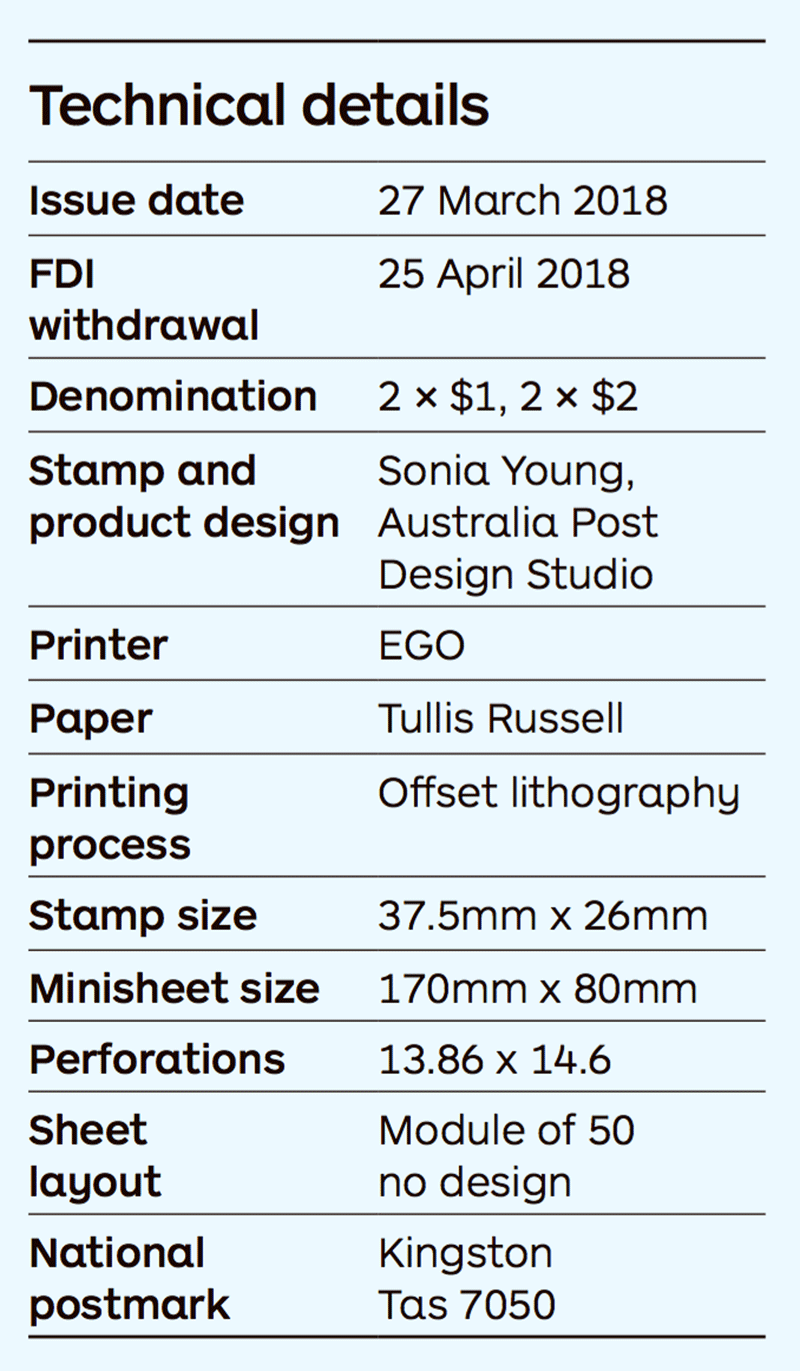
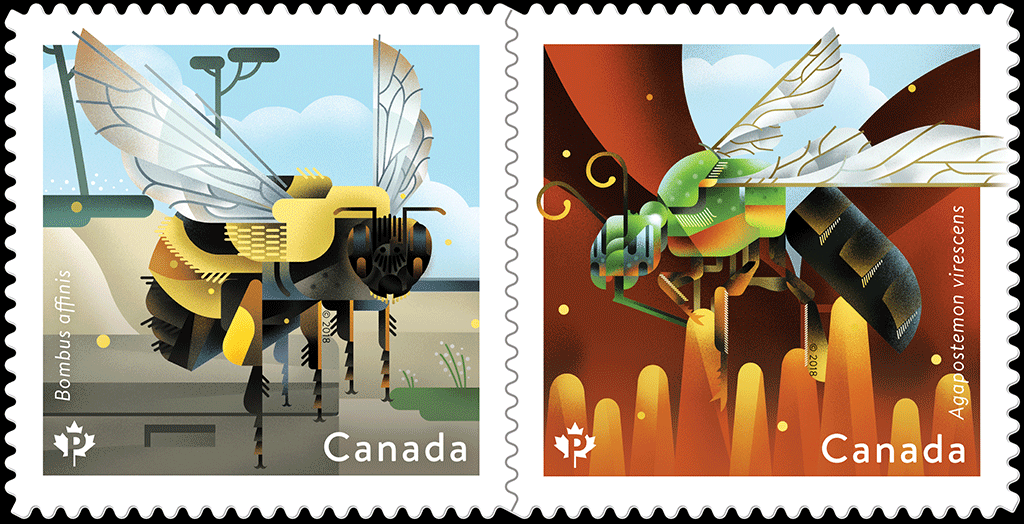
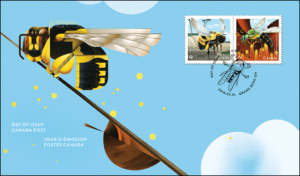 When bees begin to appear, it is a sure sign that summer is on the way – and designer Andrew Perro and illustrator Dave Murray have come up with a honey of an issue to help celebrate.
When bees begin to appear, it is a sure sign that summer is on the way – and designer Andrew Perro and illustrator Dave Murray have come up with a honey of an issue to help celebrate.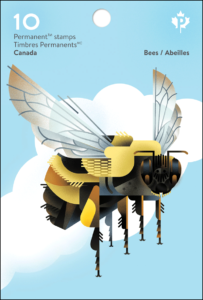 The rusty-patched bumble bee (Bombus affinis), once common in parts of Ontario and Quebec, was the first bee species to be listed by the Committee on the Status of Endangered Wildlife in Canada (COSEWIC). The metallic green bee (Agapostemon virescens), one of many sweat bee species, digs its nest in the ground and can be found throughout southern Ontario. The Official First Day Cover features another Canadian native – a small eastern resin bee (Anthidiellum notatum), which constructs a unique nest from resin and gravel.
The rusty-patched bumble bee (Bombus affinis), once common in parts of Ontario and Quebec, was the first bee species to be listed by the Committee on the Status of Endangered Wildlife in Canada (COSEWIC). The metallic green bee (Agapostemon virescens), one of many sweat bee species, digs its nest in the ground and can be found throughout southern Ontario. The Official First Day Cover features another Canadian native – a small eastern resin bee (Anthidiellum notatum), which constructs a unique nest from resin and gravel.
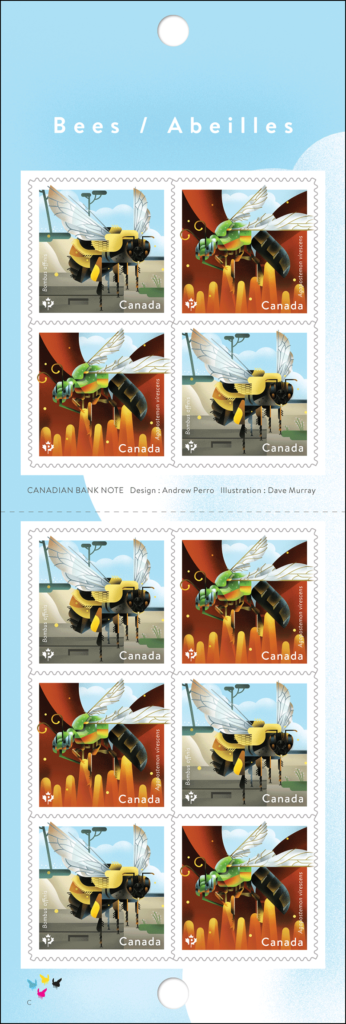
 GRAND BEND, ON, May 1, 2018 /CNW/ – With spring flowers in bloom and summer coming soon, Canada Post unveiled a pair of stamps that are sure to create a buzz – as much for their unique design as for the subject they celebrate.
GRAND BEND, ON, May 1, 2018 /CNW/ – With spring flowers in bloom and summer coming soon, Canada Post unveiled a pair of stamps that are sure to create a buzz – as much for their unique design as for the subject they celebrate.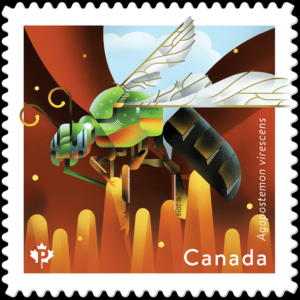 of Endangered Wildlife in Canada. In contrast, the metallic green bee – often spotted carrying loads of pollen on its back legs – is still found throughout southern Canada.
of Endangered Wildlife in Canada. In contrast, the metallic green bee – often spotted carrying loads of pollen on its back legs – is still found throughout southern Canada.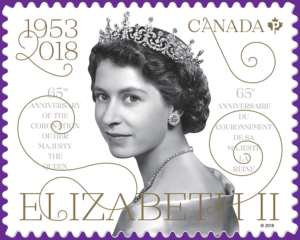 June 2 of this year marks the 65th anniversary of the coronation of Her Majesty Queen Elizabeth II – the longest reigning monarch in British history. Many “more mature” Canadians will recognize the Karsh photo on the cover of the stamp booklet from a series of five coronation stamps issued in the spring of 1953.
June 2 of this year marks the 65th anniversary of the coronation of Her Majesty Queen Elizabeth II – the longest reigning monarch in British history. Many “more mature” Canadians will recognize the Karsh photo on the cover of the stamp booklet from a series of five coronation stamps issued in the spring of 1953.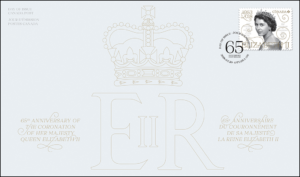 photographed Her Majesty on five occasions, two of them before she became Queen.
photographed Her Majesty on five occasions, two of them before she became Queen.
 Canada Post also says this issue features something new: “This double-sided uncut press sheet, our first to feature stamp booklets, showcases the front, back and inside panels of 12 self-adhesive stamp booklets celebrating the 65th anniversary of the coronation of Her Majesty Queen Elizabeth II.” Item #414083149 is $102. Only 1,000 available.
Canada Post also says this issue features something new: “This double-sided uncut press sheet, our first to feature stamp booklets, showcases the front, back and inside panels of 12 self-adhesive stamp booklets celebrating the 65th anniversary of the coronation of Her Majesty Queen Elizabeth II.” Item #414083149 is $102. Only 1,000 available. 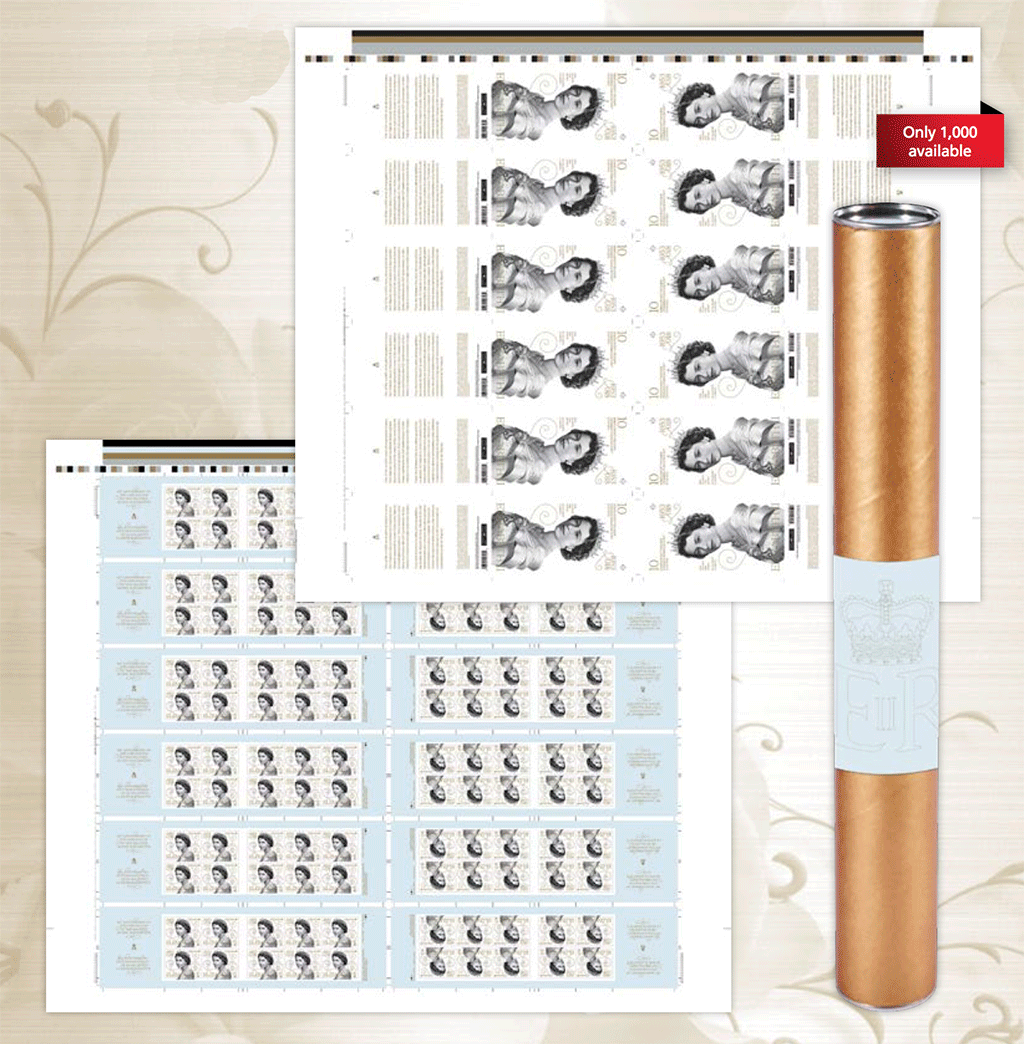
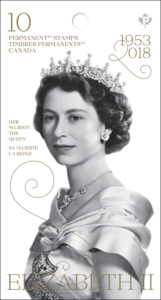 At 25, Elizabeth became Queen when her father, King George VI, died in the winter of 1952. Her coronation was delayed to allow for an appropriate mourning period. The coronation took place in Westminster Abbey on June 2, 1953. Three million people lined the streets of London along the procession route. Canadians celebrated with fireworks, parades and horse races; and the Governor General issued a silver spoon to each Canadian child born on coronation day.
At 25, Elizabeth became Queen when her father, King George VI, died in the winter of 1952. Her coronation was delayed to allow for an appropriate mourning period. The coronation took place in Westminster Abbey on June 2, 1953. Three million people lined the streets of London along the procession route. Canadians celebrated with fireworks, parades and horse races; and the Governor General issued a silver spoon to each Canadian child born on coronation day.
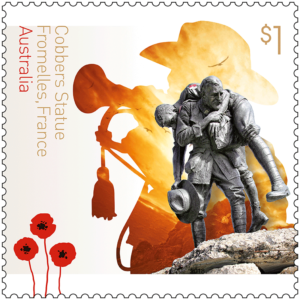 Cobbers Statue
Cobbers Statue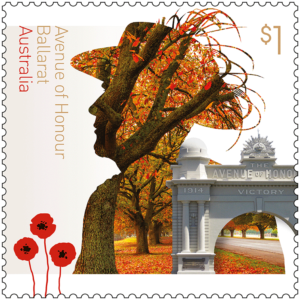 Avenue of Honour, Ballarat
Avenue of Honour, Ballarat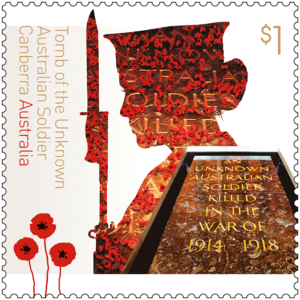 Tomb of the Unknown Australian Soldier
Tomb of the Unknown Australian Soldier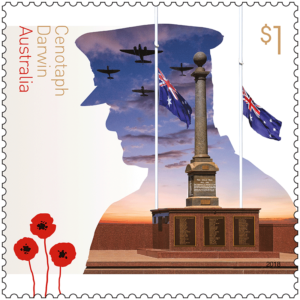 Darwin Cenotaph
Darwin Cenotaph Legacy Memorial
Legacy Memorial
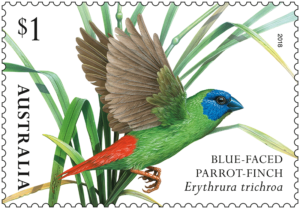 The
The 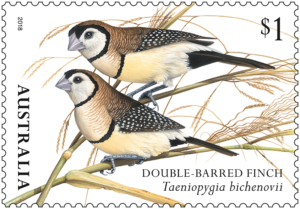 (Taeniopygia bichenovii) takes its name from the two narrow black bands across its pale chest and encircling much of its face. The Double-barred Finch stays close to surface water and occupies a range of habitats, including pandanus, long grasses, open forests, scrublands and grassy woodlands.
(Taeniopygia bichenovii) takes its name from the two narrow black bands across its pale chest and encircling much of its face. The Double-barred Finch stays close to surface water and occupies a range of habitats, including pandanus, long grasses, open forests, scrublands and grassy woodlands.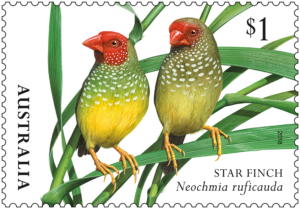 The
The 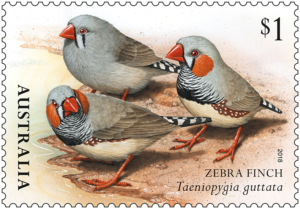 The
The 

